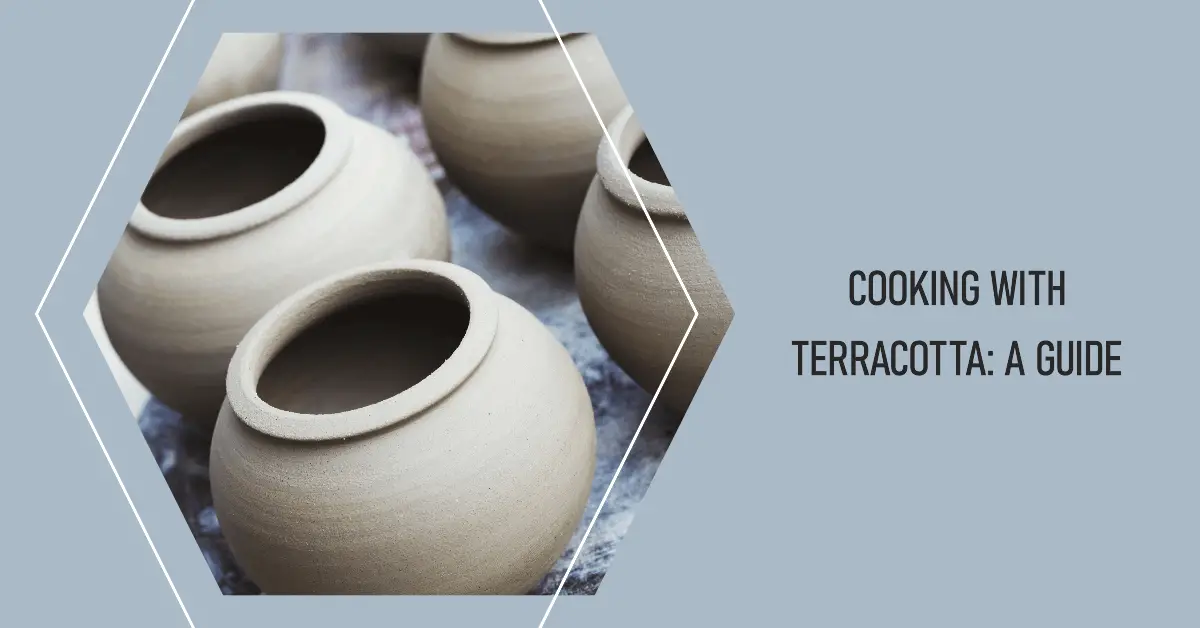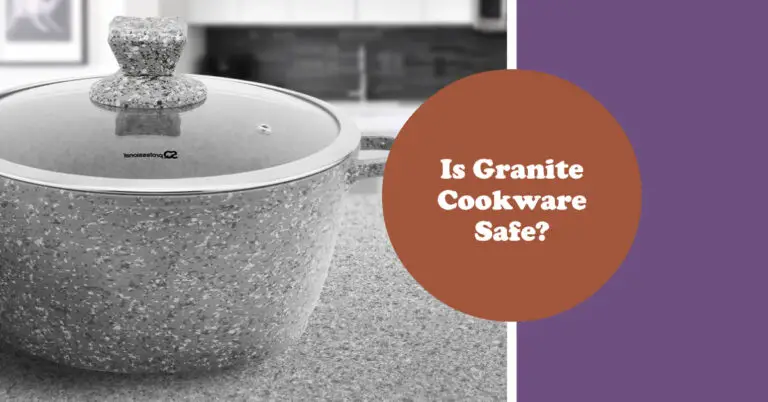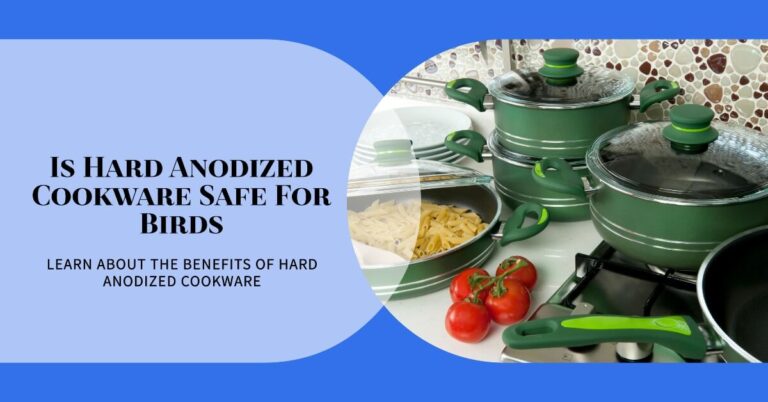Terracotta Cookware: Reviews & Guide 2023

Cooking with traditional terracotta pots and pans provides a natural, toxin-free way of preparing healthy and delicious meals. This durable, beautiful cookware has been used for thousands of years, and it’s making a comeback in modern kitchens.
In this detailed guide, we’ll cover everything you need to know about terracotta cookware, including:
- What is terracotta cookware?
- Benefits and features
- Proper care and use
- How to choose quality terracotta cookware
- Top brands
- Why it’s becoming popular again
- What foods to cook
- FAQs
Let’s get started exploring the world of this traditional and naturally non-toxic cookware.
What is Terracotta Cookware?
Terracotta cookware is made from natural terracotta clay, one of the oldest and safest cooking materials. “Terracotta” comes from an Italian word meaning “baked earth.”
Traditional terracotta is made from a combination of clay and water. It’s shaped and fired at high temperatures to harden it. This process has been used to create pots, pans, and other vessels for cooking and storage for thousands of years all over the world.
Many terracotta pans and pots sold today feature a glaze or enamel coating for an impervious and smooth cooking surface. Unglazed terracotta is also available, which some prefer for an even more natural cooking experience. Both glazed and unglazed terracotta are generally safe, inert materials that won’t react with acidic foods.
No matter what finish it features, terracotta cookware provides a non-toxic, time-tested way to cook healthy meals at home.
Benefits and Features of Terracotta Cookware
Terracotta clay cookware offers a number of benefits that make it a smart choice for toxin-free and efficient cooking:
- Natural and Non-Toxic: As an inorganic, natural clay material, unglazed or glazed terracotta cookware won’t release harmful chemicals during cooking. It provides a safer alternative to non-stick pans coated in Teflon or other potentially hazardous materials. The glazes used are lead-free and fired at high temperatures to ensure stability.
- Won’t React with Acidic Foods: Terracotta has a neutral pH, which means it won’t react with acidic ingredients like tomatoes, vinegar, wine or citrus. Foods cooked in reactive materials like aluminum or copper can absorb metallic flavors and compounds.
- Distributes Heat Evenly: The thick terracotta walls and clay construction ensure even conduction and heat distribution. Foods cook thoroughly without developing hot spots.
- Retains Heat Well: Once heated up, terracotta maintains its temperature for longer cooking times. This makes it excellent for simmering stews, soups, beans, rice and more.
- Naturally Non-Stick When Seasoned: Unglazed terracotta develops a natural patina over time that gives it non-stick properties when cared for properly. Pre-seasoning before first use can accelerate this process.
- Antibacterial and Antifungal: The porous clay has natural antibacterial and antifungal properties. Studies have found terracotta containers can help preserve foods longer.
- Keeps Food Moist and Tender: Terracotta’s heat retention allows it to simmer foods for longer periods without drying them out. The cookware is especially well-suited for cooking grains, beans, stews, soups, and roasts.
- Adds Minerals to Food: Cooking with unglazed terracotta can increase iron and magnesium content in acidic foods like tomatoes. The minerals absorb into foods from the porous cookware.
- Oven, Stovetop, and Dishwasher Safe: Quality terracotta can be used on any stovetop or open flame, and oven safe up to very high temperatures of 400-500°F. Most glazed terracotta is dishwasher safe too.
- Stylish Appearance: Terracotta has an attractive rustic, earthy look and artisanal appeal that brightens any kitchen. The clay pots bring warmth and an old-world European charm.
- Affordable and Durable: Basic terracotta pots and pans are very budget-friendly. With proper care, they can last for many years. Higher-end artisanal brands offer quality construction for longer lifespans.
With this impressive range of benefits, it’s easy to see why terracotta has been valued for cooking and storage since ancient times. It remains a great way to prepare healthy and delicious meals today.
Pros and Cons of Terracotta Cookware
Pros
- Natural and non-toxic material
- Distributes and retains heat efficiently
- Cooks food evenly without hot spots
- Naturally non-stick when seasoned
- Adds beneficial iron and minerals
- Eco-friendly and sustainable clay
- Visually attractive for serving
- Affordable cost for a quality material
Cons
- Heavy and prone to breaking if dropped
- Requires special care like seasoning
- Not recommended for high heat searing
- Staining can occur from acidic or pigmented foods
- Not compatible with abrupt temp changes
- Unglazed version requires more maintenance
How to Care for and Maintain Terracotta Cookware?
While very durable, terracotta cookware does require some special care and maintenance:
- Seasoning: Seasoning before first use and periodically after that helps build up a natural non-stick patina. Coat the inside with a thin layer of cooking oil and bake at 200-250°F for 30 minutes. Repeat 1-2 more times.
- Avoid Thermal Shocks: Don’t expose terracotta to sudden temperature changes which can cause cracking. Allow pans to come to room temp before washing or storing. Preheat gradually before use.
- Handwash Recommended: Handwashing extended the lifespan compared to the dishwasher. If dishwashing, use low heat drying cycle.
- Proper Storage: Store terracotta cookware in a dry place. Avoid stacking lids or pots inside one another. Place parchment paper between stacked pieces.
- Remove Stains: Discoloration from highly pigmented foods can be removed by soaking in vinegar and water solution or lemon juice and salt. Re-season after cleaning.
- Repair Chips and Cracks: Small chips don’t affect usability. For cracks, epoxy or food-safe sealant can repair damage. Larger cracks may require replacement.
With proper use and care, quality terracotta cookware can last for many years, or even decades. Taking some basic precautions will help ensure your pieces have a long lifespan.
How to Choose the Best Terracotta Cookware?
When selecting terracotta pots, pans, tagines or other pieces, keep these tips in mind:
- Thickness – Thicker walls promote even heating and durability. Minimum 3/8” thickness recommended, or up to 1” for extra efficiency and robustness.
- Unglazed or Glazed – Unglazed has a more natural feel but requires more seasoning and care. Easy-care glazed models allow quicker cooking. Pick based on your needs.
- Size and Shape – Consider the stove type, number of servings, and types of meals you’ll be cooking. Round or oval pots work well.
- Reputable Brand – Stick to quality brands like Le Creuset, Emile Henry, and Staub that use non-toxic, lead-free glazes and durable construction.
Buying from respected terracotta cookware companies gives peace of mind you’re getting a well-made and safe product.
Top Terracotta Cookware Brands
Here are some of the best terracotta cookware brands to consider:
Emile Henry
- French brand making terracotta since 1850
- Wide range of stylish glazed oven pots and dishes
- Vibrant ceramic glaze up to 800°F oven safe
- 10 year warranty
Le Creuset
- Premium French brand famous for enameled cast iron
- High-quality glazed terracotta Dutch ovens and tagines
- Striking colors like cherry or flame orange
- Matching stoneware accessories available
Staub
- Respected French brand focused on innovation
- Dark matte black enamel exterior
- Lighter interior enameling reduces visible staining
- Smooth ceramic glazing for great browning
Chantal
- Family-owned American company since 1986
- Affordable prices for smaller budgets
- Classic styling in round oven cocottes
- Limited lifetime warranty
La Chamba
- Fair trade Colombian brand since 1985
- Supports local indigenous artisans
- Unglazed and lead-free glazed pieces
- Traditional styles, authentic heritage
Iwachu
- Japanese cast iron and terracotta brand
- Specializes in authentic rice cookers and tea pots
- Excellent heat retention
- Retro cherry red color options
Campo Azul
- Portuguese artisanal producer
- Organic clay harvest and handcrafted process
- Traditonal shapes like bean pots
- Environmentally friendly practices
Guatambu
- Ecuadorian brand supporting local artisans -passes SGS lead and cadmium test
- Creative lines like Vivir, Fusion, Ancestral
- Colorful hammock-inspired tags
Clay Coyote
- Canadian brand, woman-owned
- Custom designs like heart-shaped casseroles
- Food safe, durable stoneware clay
- Creative shapes and glossy finishes
With outstanding options from Le Creuset, Emile Henry, Staub and more, you really can’t go wrong. Evaluate your budget, design preferences, and any special needs to select the perfect terracotta pots and pans for your kitchen.
Top Picks of Terracotta Cookware
Best Overall: Le Creuset Round French Oven
The Le Creuset Round French Oven is one of the most beloved and iconic terracotta pots. Available in a range of vivid colors with a durable enamel exterior and large round shape perfect for soups, stews, and roasts, this French oven is a must-have for any home chef. With superior heat distribution thanks to its terra cotta construction, this pot will become your new favorite for preparing delicious braised dishes.
Best Budget: Emile Henry Ceramic-Coated Oval Dish
For those on a budget, the Emile Henry Ceramic-Coated Oval Dish can’t be beaten. The generously sized oval shape accommodates large cuts of meat and poultry for roasting. From turkey to pork shoulder, foods turn out moist and flavorful in this affordable dish. The attractive Burgundy color adds a pop of color to your oven or tabletop for serving.
Best for Rice: Iwachu Japanese Rice Cooker
Rice lovers will adore the Iwachu Japanese Rice Cooker. Crafted in Japan, this ceramic rice pot makes the perfect pot of sticky rice every time. The unglazed interior allows the rice to release starches for clingy, moist rice texture. The screw-on lid and sturdy handles make this rice cooker a useful and beautiful addition to any kitchen.
Best for Baking: Chantal Heart-Shaped Baker
Bakers should check out the adorable Chantal Heart-Shaped Baker. Available in a vivid red hue, this petite heart-shaped casserole is ideal for baking cobblers, brownies, mac and cheese, and other bubbly baked goods. The stoneware construction provides even heating while the unique shape makes a festive presentation.
Best Teapot: Japanese Tetsubin Cast Iron and Terracotta Tea Kettle
Tea enthusiasts will delight in the Japanese Tetsubin Cast Iron and Terracotta Tea Kettle. Combining enameled cast iron on the exterior with a natural clay interior, this stovetop kettle has excellent heat retention. The handcrafted spout and handle provide precise pouring control. The Tetsubin style kettle infuses tea with subtle earthy tones.
Buyer Opinions on Terracotta Cookware
Here are some comments shared by buyers of terracotta cookware:
“I love how moist and tender it keeps meat compared to metal pots.”
“The clay absorbs moisture so rice always turns out perfect.”
“It gives stews and curries such rich depth of flavor.”
“So cute for baking mini desserts and side dishes.”
“The heat retention is amazing. It holds a simmer forever.”
“I feel good about cooking without synthetic non-stick coatings.”
“It does take more care but I don’t mind. Totally worth it.”
Top Alternatives to Terracotta
- Enameled cast iron Dutch ovens – Heavy duty, retains heat and moisture well. A bit more durable and can handle searing. From brands like Le Creuset, Staub, Lodge.
- Stainless steel – Lighter weight than clay and very durable. Conducts heat quickly but doesn’t retain heat as long. Non-reactive stainless is great for searig.
- Ceramic – Lighter than clay but doesn’t retain heat quite as well. Inexpensive but prone to chipping. Good for bakeware.
- Carbon steel – Lightweight like stainless but with fast even heating. Requires seasoning like cast iron. Excellent for woks and sauté pans.
The Terracotta Cookware Renaissance
After falling out of favor for some decades, terracotta is making a major comeback for several compelling reasons:
- Increased Interest in Natural Cookware – More awareness about toxin-free cooking options drives demand for terracotta’s safe materials.
- Concerns Over Modern Cookware Dangers – Worries about Teflon and other coatings link to health issues boost terracotta as a traditional alternative.
- Vintage Appeal and Craftsmanship – For some cooks, mass-produced modern cookware lacks the artisanal appeal of hand-made style terracotta.
- Sustainable and Eco-Friendly – From local clay sourcing to extended lifespans, terracotta offers green benefits, fitting today’s values.
- Promotion by Chefs and Authors – Glowing endorsements in cooking sites, magazines, and bestselling books underline terracotta’s virtues.
- Expanded Styles and Colors – A departure from basic earth tones, new glazes and silhouettes modernize terracotta’s look.
This new generation of design-forward cooks are discovering what previous civilizations have long understood – when cared for properly, terracotta is simply one of the best (and safest) ways to cook delicious meals.
Best Foods to Cook in Terracotta Pots
Terracotta works with a wide variety of savory and sweet dishes:
- Beans, lentils, chickpeas – Enhances flavor and texture
- Rice, quinoa, farro – Ensures fluffy grains
- Soups, stews, chilies – Slow simmering without burning or sticking
- Curries – Distributes spices and aromas evenly
- Roast meats and vegetables – Moist and tender results
- Braised and stewed meats – Retains moisture for fall-off-the-bone texture
- Eggs – Slide out easily from seasoned surface
- Veggie side dishes – Caramelized flavor without overcooking
- Bread – Crusty exteriors, moist interiors
- Cobblers, crisps, and pies – Makes fruit filling thick and bubbly
Avoid cooking highly acidic foods frequently, as the acid can damage the clay over time. Otherwise, terracotta pots and pans offer incredible versatility in the kitchen.
To get you started, here are just a few example recipes that work beautifully in terracotta:
- Overnight Oats – Soak oats and toppings in a terracotta pot for a nourishing warm breakfast
- Minestrone Soup – Low and slow simmering on the stovetop
- Chicken Tagine – Savory North African-inspired braise
- Pear and Cranberry Crumble – Fruit filling with oat streusel topping
- Sourdough Bread – Crisp crust and light interior texture
- Berry Cobbler – Sweet dessert with biscuit topping
Frequently Asked Questions About Terracotta Cookware
Here are answers to some of the most common questions about this traditional material:
Does terracotta add iron to food?
Unglazed terracotta can add small amounts of iron and other minerals, especially for acidic ingredients like tomatoes or wine. This can be considered a benefit for enriched nutrition. Glazed surfaces prevent absorption of minerals.
Is terracotta safe to use if chipped?
Small chips on the surface don’t affect safety or usability. Just avoid exposing the unglazed porous interior, where bacteria could enter. Deep chips or cracks should be repaired.
Can terracotta crack from temperature changes?
Sudden temperature shifts can cause cracks in terracotta. Allow pans to cool before washing and preheat gradually before use. Use moderate stove settings to prevent thermal shock.
Is terracotta better than ceramic cookware?
It offers more heat retention but is heavier. Ceramic conducts less heat, but is lighter weight. Terracotta is more durable typically. Consider your cooking style and needs.
Does food stick without proper seasoning?
Unglazed models benefit greatly from seasoning to build up the non-stick patina. Pre-seasoning helps prevent sticking. Glazed terracotta is more naturally non-stick.
Conclusion
Born from the earth, terracotta cookware provides natural toxin-free cooking with many benefits. Brands like Emile Henry, Le Creuset, and Staub offer quality craftsmanship and contemporary style. When cared for properly, terracotta pots and pans will serve you deliciously and safely for many years to come. Give this original non-toxic cookware a try!


